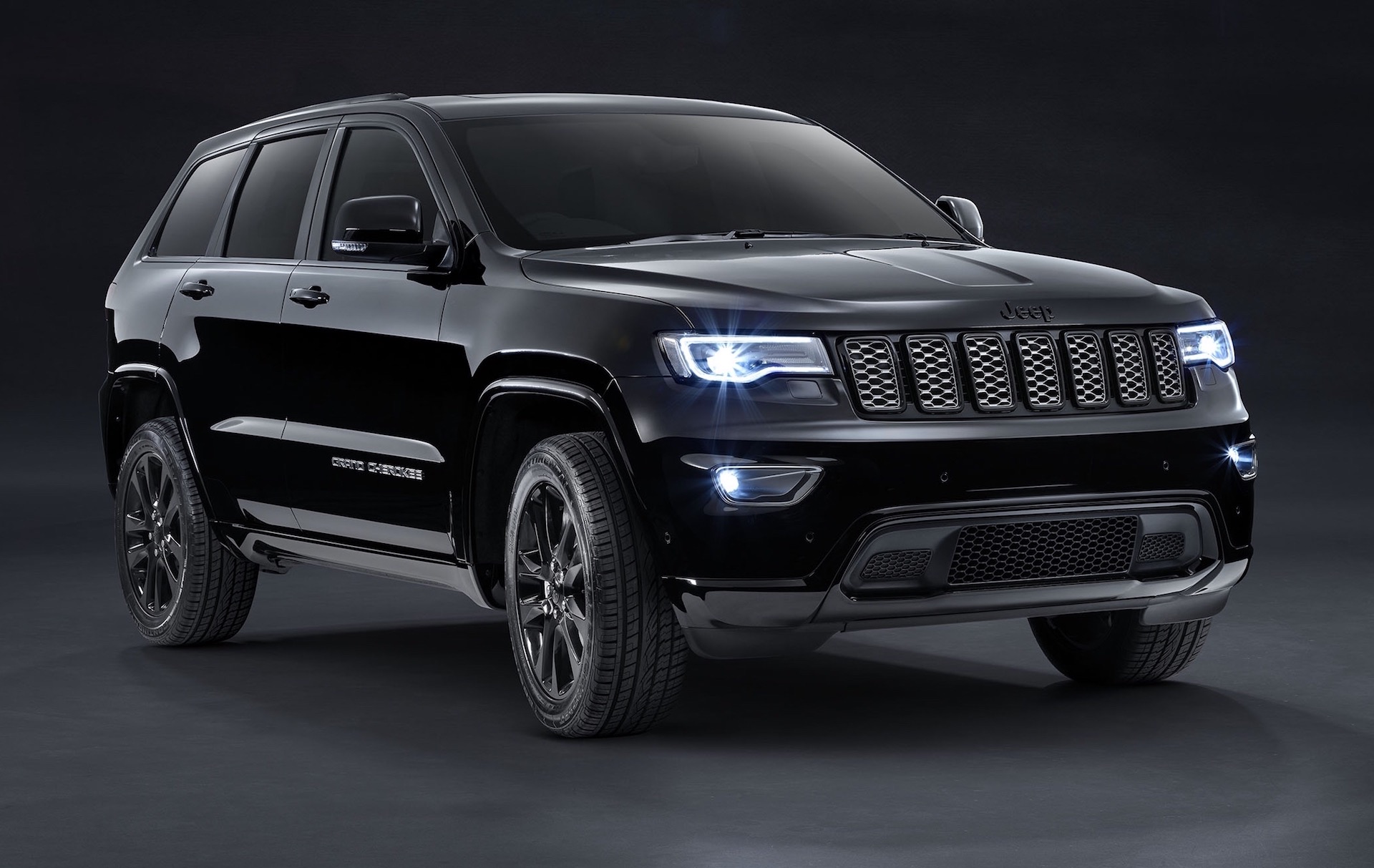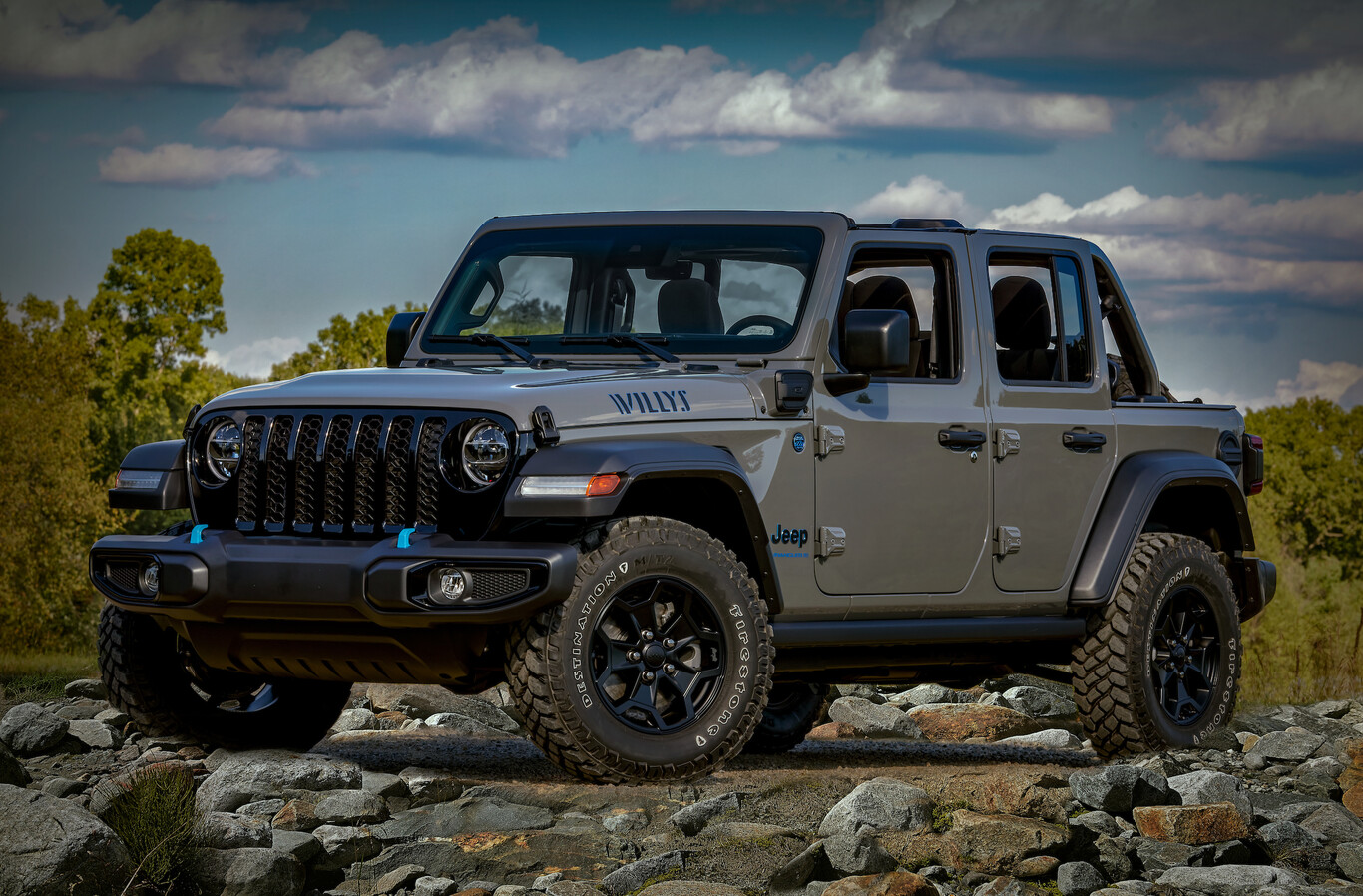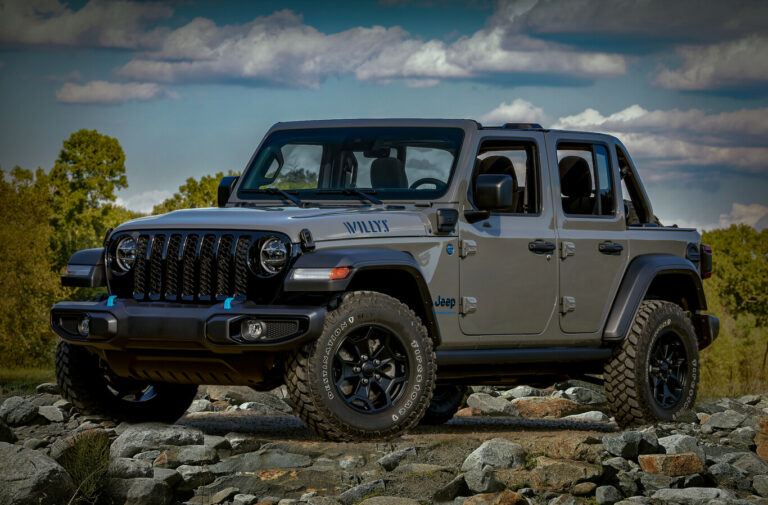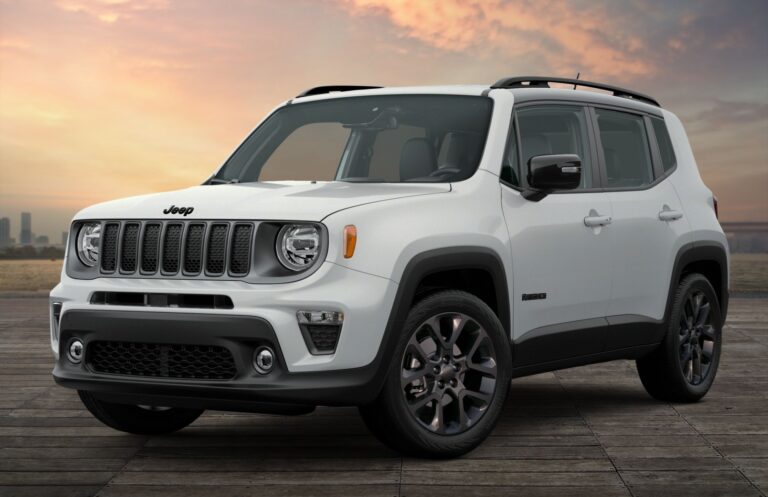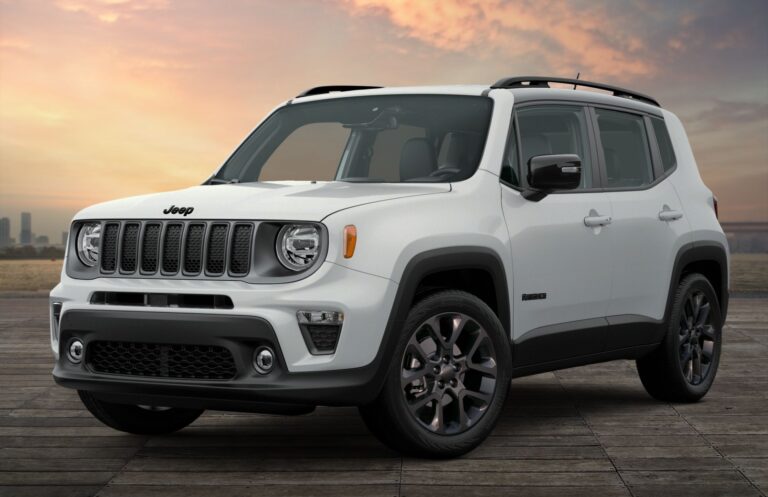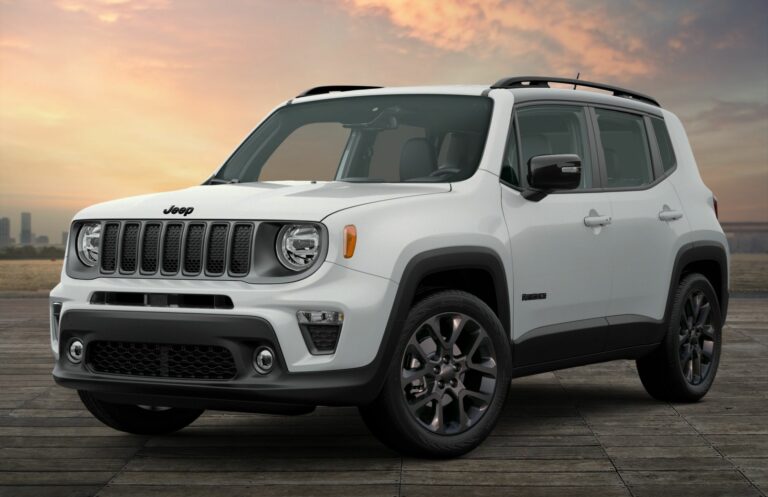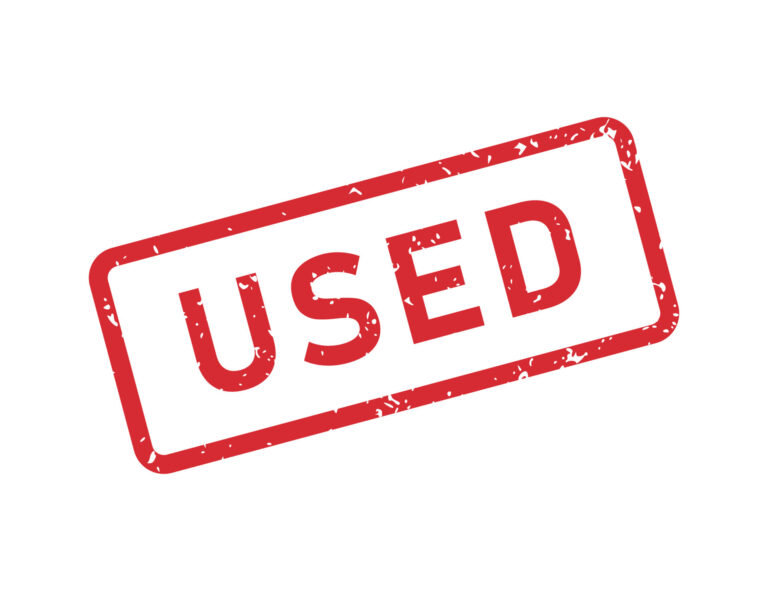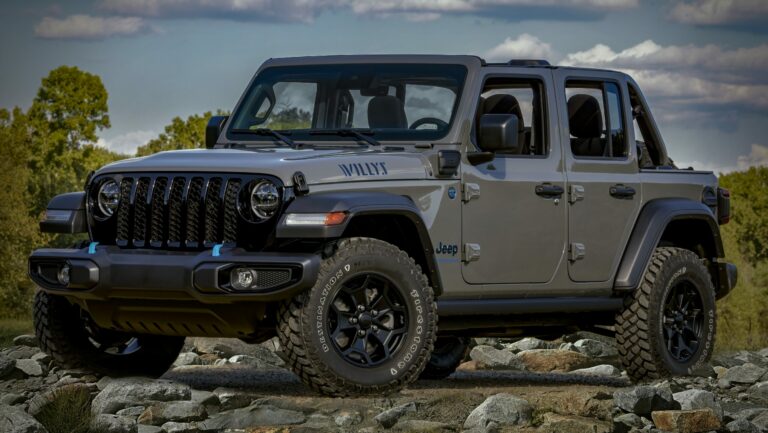Jeep Stroker For Sale: Unleashing the Beast Within Your Off-Road Companion
Jeep Stroker For Sale: Unleashing the Beast Within Your Off-Road Companion jeeps.truckstrend.com
The iconic Jeep, a symbol of freedom, adventure, and unparalleled off-road capability, holds a special place in the hearts of enthusiasts worldwide. While stock Jeeps are undeniably capable, there’s a segment of the community always striving for more – more power, more torque, and ultimately, more performance. This pursuit often leads to the realm of the "Jeep Stroker," a term that ignites excitement and curiosity among those looking to elevate their rig’s prowess.
This comprehensive guide delves into everything you need to know about "Jeep Stroker For Sale," from understanding what it is to the crucial considerations when buying one. Whether you’re a seasoned off-roader contemplating an upgrade or a newcomer intrigued by the concept, this article will equip you with the knowledge to navigate the market and make an informed decision.
Jeep Stroker For Sale: Unleashing the Beast Within Your Off-Road Companion
What Exactly is a Jeep Stroker? Defining the Power Upgrade
At its core, a "Jeep Stroker" refers to an engine, typically the venerable 4.0-liter inline-six found in many popular Jeep models (like the Cherokee XJ, Wrangler TJ/YJ, and Grand Cherokee ZJ), that has been modified to increase its displacement. This increase in displacement, achieved through a process called "stroking," directly translates to more horsepower and, critically, more torque.
The stroking process primarily involves two key modifications:
- Longer Crankshaft Throw: A crankshaft with a longer throw is installed. This means the piston travels further up and down within the cylinder during each rotation, increasing the swept volume. Often, a crankshaft from a 4.2-liter Jeep engine (found in older CJ/YJ models) is used, as it has a longer stroke than the 4.0-liter.
- Matching Pistons and Connecting Rods: To accommodate the longer stroke and maintain proper compression, new pistons and connecting rods are typically installed. These are designed to work harmoniously with the longer throw, ensuring durability and optimal performance.
- Cylinder Boring (Optional but Common): While not strictly part of "stroking," it’s common practice to bore out the cylinders slightly (e.g., from 3.875 inches to 3.900 inches or more) during the rebuild. This combined with the longer stroke further increases the engine’s displacement.
![]()
The most common stroker configurations for the 4.0L engine result in displacements of 4.5L, 4.6L, or 4.7L. The precise displacement depends on the crankshaft used, the bore size, and the piston/rod combination. The result is an engine that looks externally identical to a stock 4.0L but delivers a significantly more potent punch, especially in the low-to-mid RPM range, where torque is king for off-roading.
Why Consider a Jeep Stroker? Benefits and Advantages
The appeal of a Jeep stroker is multifaceted, offering a range of benefits that transform the driving and off-roading experience:
- Significant Performance Boost: This is the primary motivator. A well-built stroker can add 50-100+ horsepower and even more torque over a stock 4.0L. This translates to quicker acceleration, easier highway merging, and dramatically improved off-road capability.
- Enhanced Off-Road Prowess: Torque is paramount for off-roading, especially for crawling over obstacles or climbing steep inclines. A stroker’s increased low-end torque allows the Jeep to maintain momentum with less throttle input, reducing strain on the drivetrain and improving control.
- Improved Towing Capability: For those who use their Jeep to tow trailers, campers, or other toys, the added torque makes a noticeable difference, reducing the struggle on inclines and making for a more relaxed towing experience.
- Better Daily Driving Dynamics: Even for regular street driving, a stroker makes the Jeep feel more responsive and less strained. It can hold higher gears longer, reducing the need for constant downshifting.
- Cost-Effectiveness (vs. V8 Swaps): While not inexpensive, building or buying a stroker is often more cost-effective than a full V8 engine swap, which typically requires more extensive modifications to the transmission, transfer case, axles, and electrical system. A stroker often integrates more seamlessly with the existing drivetrain.
- Retaining the Inline-Six Character: Many Jeep purists appreciate the inherent reliability and simplicity of the inline-six engine. A stroker allows them to retain this characteristic while gaining a substantial power upgrade.
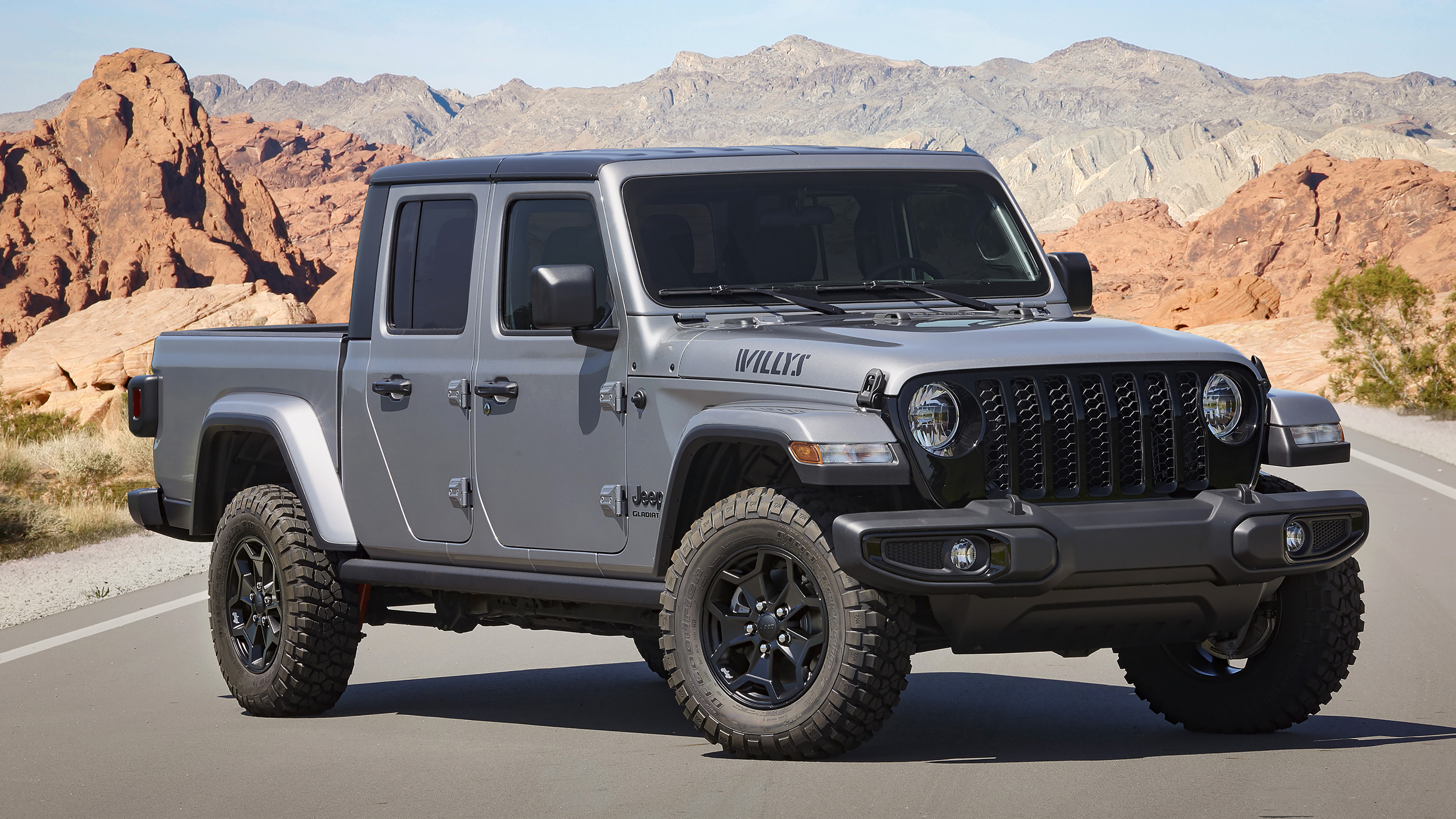

Key Considerations When Buying a Jeep Stroker
Purchasing a Jeep with a stroker engine, or a standalone stroker engine, requires careful consideration. It’s not like buying a factory-new vehicle; you’re dealing with a custom build, and quality can vary widely.
- Source and Builder Reputation: This is perhaps the most critical factor. Was the stroker built by a reputable shop with a proven track record, or was it a backyard DIY project? Ask for the builder’s name, credentials, and try to find reviews or references. A quality builder will stand behind their work.
- Engine Condition and Documentation:
- Ask for Build Sheets: Request detailed documentation of the build, including parts used (crankshaft, pistons, rods, camshaft, cylinder head work), machining specs, and the date of the build.
- Mileage Since Build: How many miles have been put on the stroker since it was built? Lower mileage generally means more life left.
- Performance Metrics: Ask for compression test results, oil pressure readings (hot and cold), and any dyno sheets if available. These provide objective data on the engine’s health and output.
- Visual Inspection: Look for signs of leaks (oil, coolant), unusual wear, or evidence of overheating. Check the condition of belts, hoses, and wiring.
- Supporting Modifications: A stroker engine produces significantly more power and heat. The stock components of the Jeep may not be up to the task. Ensure the vehicle has the following essential upgrades:
- Cooling System: An upgraded radiator (e.g., all-aluminum 2-row or 3-row), a high-flow water pump, and a heavy-duty fan clutch or electric fan conversion are crucial to prevent overheating.
- Fuel System: Larger fuel injectors and potentially a higher-volume fuel pump are often necessary to provide adequate fuel for the increased displacement.
- Exhaust System: A larger diameter exhaust system allows the engine to breathe better and capitalize on its increased power.
- Drivetrain: The stock transmission, transfer case, driveshafts, and axles may be stressed by the added power, especially under heavy off-road use. Inquire about upgrades like heavy-duty U-joints, chromoly axle shafts, or transmission/transfer case reinforcements.
- Emissions Compliance: This is a major hurdle in some regions. A stroker engine, being a modified component, may not pass emissions tests or visual inspections, depending on local regulations. Research your local laws thoroughly before committing to a purchase.
- Test Drive: Always perform a thorough test drive. Listen for unusual noises (knocks, ticks, excessive lifter noise), feel for smooth power delivery, check for overheating, and evaluate how the transmission shifts under load. Test it in various driving conditions, including highway speeds and, if possible, light off-road scenarios.
- Pre-Purchase Inspection (PPI): It cannot be stressed enough: always get a Pre-Purchase Inspection from an independent, trusted mechanic familiar with Jeeps and modified engines. This expert eye can spot issues you might miss and provide an unbiased assessment of the vehicle’s condition and the quality of the stroker build.
Where to Find a Jeep Stroker For Sale
Finding the right Jeep stroker can take time and patience. Here are the most common avenues:
- Online Marketplaces: Websites like Craigslist, Facebook Marketplace, and eBay Motors often list Jeeps with stroker engines installed. Be cautious and apply all the "Key Considerations" listed above.
- Dedicated Jeep/Off-Road Forums & Groups: Websites like NAXJA (North American XJ Association), Jeepforum, Pirate4x4, and various Facebook groups dedicated to specific Jeep models or off-roading are excellent resources. Members often sell their highly modified rigs, and you can sometimes find detailed build threads.
- Specialized Jeep/4×4 Shops: Performance shops that specialize in Jeep modifications often build and sell stroker engines or complete Jeeps with strokers. Buying from a reputable shop can offer peace of mind, as they typically provide warranties on their work.
- Engine Builders: Companies that specialize in performance engine building can sell you a complete, crate stroker engine ready for installation into your own Jeep.
- Word-of-Mouth: Networking within the local off-roading community can lead you to a private seller looking to offload their well-built rig.
The Buying Process: Tips for a Smooth Transaction
Once you’ve found a potential candidate, follow these tips for a successful purchase:
- Be Patient and Thorough: Don’t rush into a decision. Take your time to research, inspect, and ask questions.
- Communicate Clearly: Ask detailed questions about the build, maintenance history, and any known issues. Request photos and videos if buying remotely.
- Verify Documentation: Ensure the seller has a clear title for the vehicle. If buying an engine, get receipts for the build.
- Negotiate Wisely: Be prepared to negotiate the price, but remember that a high-quality stroker build adds significant value. Don’t lowball excessively on a well-documented, well-maintained rig.
- Consider Shipping Costs: If buying a complete Jeep from out of state, factor in the cost of transport.
Potential Challenges and Solutions
While a stroker offers immense benefits, it’s essential to be aware of potential challenges:
- Reliability Issues (if poorly built): A poorly assembled stroker can lead to premature failure, oil consumption, or constant issues.
- Solution: Prioritize reputable builders, thorough PPIs, and detailed documentation.
- Overheating: More power equals more heat. Inadequate cooling is a common issue.
- Solution: Ensure the cooling system is robustly upgraded (radiator, fan, water pump, thermostat).
- Drivetrain Stress and Failure: Stock transmissions, transfer cases, and axles may not withstand the increased torque, especially during aggressive off-roading.
- Solution: Inspect for drivetrain upgrades. Budget for potential future upgrades if not already done.
- Emissions and Legality: As mentioned, modified engines can face legal hurdles in some areas.
- Solution: Research local laws before buying. Some areas have exemptions for older vehicles, but many do not.
- Higher Fuel Consumption: More displacement and power generally mean a thirstier engine.
- Solution: Factor increased fuel costs into your budget.
Jeep Stroker For Sale: Estimated Price Guide
The cost of a Jeep stroker can vary significantly depending on whether you’re buying just the engine or a complete Jeep with an installed stroker, as well as the quality of the build and other modifications.
| Item/Service | Estimated Price Range (USD) | Notes |
|---|---|---|
| Stroker Engine (Crate/Rebuilt) | ||
| DIY Stroker Kit (parts only) | $1,500 – $3,000 | Includes crankshaft, connecting rods, pistons, and possibly a camshaft. Does NOT include engine block, cylinder head, machining, or labor for assembly. Requires significant mechanical skill and tools. |
| Rebuilt Long Block Stroker | $4,000 – $7,000 | A complete engine block with all internal components (crank, rods, pistons, camshaft, lifters) and a cylinder head, fully assembled. Does NOT typically include external accessories like intake manifold, exhaust manifold, sensors, or fuel system components. Ready for your accessories. |
| Complete Turnkey Stroker Engine (Crate) | $6,000 – $10,000+ | A fully assembled, ready-to-drop-in engine, often including intake manifold, exhaust manifold, fuel injectors, throttle body, sensors, and sometimes even a tuned ECU. This is the most convenient option, but also the most expensive for just the engine. |
| Jeep with Installed Stroker Engine | These prices are for the entire vehicle, highly dependent on the year, model, overall condition, mileage, and extent of other modifications (lift, tires, axles, armor, etc.). | |
| Older Model (e.g., XJ, YJ) – Fair Condition | $8,000 – $15,000 | Vehicle may have higher mileage, cosmetic flaws, or require some additional work. The value is primarily in the stroker engine and potentially some basic off-road upgrades. |
| Mid-Range Model (e.g., TJ, ZJ) – Good Condition | $12,000 – $25,000 | Typically in better overall condition, often with a range of desirable modifications like lift kits, larger tires, upgraded axles, and better suspension components in addition to the stroker. Represents a common sweet spot for buyers. |
| High-End Build/Newer Model – Excellent Condition | $20,000 – $40,000+ | These are often meticulously built rigs with low mileage on the stroker, extensive modifications (e.g., custom suspension, heavy-duty axles, lockers, custom fabrication), and in pristine condition. These are turn-key, highly capable vehicles. |
| Related Costs/Services (If Buying a Jeep) | These are potential additional costs you might incur, especially if the vehicle doesn’t have all supporting mods or requires attention. | |
| Pre-Purchase Inspection (PPI) | $100 – $300 | Essential for peace of mind. Cost varies by mechanic and depth of inspection. |
| Shipping (if applicable) | $500 – $1,500+ | Varies significantly by distance and type of carrier. |
| Emissions Testing/Compliance | Varies by state/country | May require additional tuning or specific components to pass local emissions regulations. |
| Supporting Modifications (Estimated if not already done) | If the Jeep you buy doesn’t have these, budget for them to ensure reliability and performance. | |
| Upgraded Cooling System | $300 – $800 | High-performance radiator, heavy-duty fan clutch or electric fan, high-flow water pump. |
| Fuel System Upgrades | $200 – $500 | Larger fuel injectors, higher flow fuel pump. |
| Exhaust System | $300 – $1,000 | Larger diameter cat-back or full exhaust system for better flow. |
| Drivetrain Reinforcements | $500 – $3,000+ | Upgraded U-joints, chromoly axle shafts, transmission cooler, transfer case brace/slip yoke eliminator, or even full transmission/transfer case rebuilds/upgrades. Costs can quickly escalate depending on the extent of reinforcement needed. |
Frequently Asked Questions (FAQ) About Jeep Strokers
Q1: What is the typical lifespan of a stroker engine?
A1: A well-built and properly maintained stroker engine can be as reliable and long-lasting as a stock engine, often exceeding 150,000-200,000 miles. However, reliability heavily depends on the quality of the build, the parts used, and diligent maintenance (regular oil changes, proper cooling, etc.). A poorly built stroker may fail prematurely.
Q2: Will a stroker engine pass emissions?
A2: This is highly dependent on your local emissions laws. In some states/countries, modified engines, especially those with increased displacement, may not pass visual inspection or tailpipe emissions tests. Some builders can tune strokers to run cleanly, but it’s crucial to check your local regulations before purchasing. Older vehicles in some regions might be exempt.
Q3: Do I need to upgrade my transmission and drivetrain if I get a stroker?
A3: It’s highly recommended. While the stock drivetrain might hold up for light use, the increased horsepower and torque from a stroker put significantly more strain on the transmission, transfer case, driveshafts, and axles, especially during aggressive off-roading. Upgraded cooling for the transmission, heavy-duty U-joints, and reinforced axle shafts are common and often necessary upgrades.
Q4: Is a stroker worth the cost?
A4: For many Jeep enthusiasts, absolutely. The performance gains, especially the low-end torque for off-roading, are transformative. Compared to a full V8 swap, a stroker can be a more integrated and often less expensive solution. However, the "worth" is subjective and depends on your budget, intended use, and performance expectations.
Q5: What kind of fuel does a stroker need?
A5: Most well-tuned strokers are designed to run on premium (91+ octane) fuel. The increased compression ratio and performance tuning often necessitate higher octane to prevent pre-ignition (knocking). Always check the builder’s recommendations.
Q6: Can I build a stroker myself?
A6: Yes, many experienced DIY mechanics build their own strokers. However, it requires a significant understanding of engine mechanics, access to specialized tools, and often professional machine shop services for boring, honing, and balancing. If you’re not confident in your engine building skills, it’s best left to professionals.
Q7: How much horsepower does a stroker add?
A7: While stock 4.0L engines typically produce around 190 HP and 225 lb-ft of torque, a well-built 4.6L or 4.7L stroker can push figures to 240-280 HP and 280-330 lb-ft of torque. The exact figures depend on the specific components used (camshaft, cylinder head, intake, exhaust, tuning) and the quality of the build.
Conclusion
The "Jeep Stroker For Sale" market offers an exciting opportunity for enthusiasts to acquire a significantly more powerful and capable off-road machine. A well-executed stroker build can unleash the true potential of the beloved inline-six engine, providing a driving experience that far surpasses a stock Jeep, especially when tackling challenging terrain.
However, venturing into this market requires diligence and an informed approach. The quality of a stroker build varies wildly, and an uninspected or poorly documented purchase can lead to headaches and costly repairs. By prioritizing reputable sources, conducting thorough inspections, understanding the necessary supporting modifications, and asking the right questions, you can confidently navigate the market and find a Jeep stroker that will provide years of exhilarating performance and adventure. The reward of owning a Jeep with a heart of pure torque is well worth the effort.
